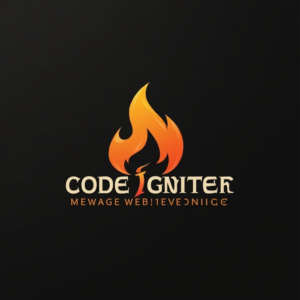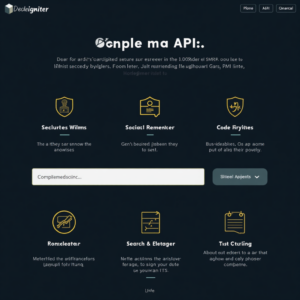
Introduction to CodeIgniter Portal Development
CodeIgniter is a popular open-source PHP web framework that enables developers to build robust and scalable web applications quickly and efficiently. It provides a simplified approach to web development, making it an ideal choice for building complex web portals. In this article, we will explore the concept of CodeIgniter portal development, its benefits, and the steps involved in building a web portal using CodeIgniter.CodeIgniter offers a wide range of features, including a simple and intuitive API, a robust security system, and excellent support for databases. Its modular design makes it easy to extend and customize, allowing developers to build complex web applications with ease. Whether you’re building a simple website or a complex web portal, CodeIgniter is an excellent choice for any web development project.
Benefits of CodeIgniter Portal Development
CodeIgniter portal development offers a wide range of benefits, including rapid development, flexibility, and scalability. With CodeIgniter, developers can build web portals quickly and efficiently, without compromising on quality or performance. Its streamlined architecture and modular design make it easy to maintain and update web applications, reducing the overall cost of ownership.CodeIgniter also provides excellent support for search engine optimization (SEO), making it easy to optimize web portals for better search engine rankings. Its built-in support for internationalization and localization makes it easy to build web portals that cater to a global audience. Whether you’re building a web portal for a small business or a large enterprise, CodeIgniter is an excellent choice for any web development project.

Key Features of CodeIgniter Portal Development
CodeIgniter portal development offers a wide range of key features, including a simple and intuitive API, a robust security system, and excellent support for databases. Its modular design makes it easy to extend and customize, allowing developers to build complex web applications with ease. Some of the key features of CodeIgniter portal development include:MVC pattern: CodeIgniter follows the Model-View-Controller (MVC) pattern, which makes it easy to separate the presentation layer from the business logic.Template engine: CodeIgniter comes with a built-in template engine that makes it easy to render dynamic content.Database support: CodeIgniter provides excellent support for databases, including MySQL, PostgreSQL, and Microsoft SQL Server.
Steps Involved in CodeIgniter Portal Development
The steps involved in CodeIgniter portal development include planning, designing, development, testing, and deployment. In the planning phase, developers identify the requirements of the web portal and create a detailed plan for its development. In the designing phase, developers create a visual representation of the web portal, including its layout, user interface, and user experience.In the development phase, developers build the web portal using CodeIgniter, following the MVC pattern and using its built-in features and libraries. In the testing phase, developers test the web portal for bugs and errors, ensuring that it works as expected. Finally, in the deployment phase, developers deploy the web portal to a production server, making it available to the public.
Best Practices for CodeIgniter Portal Development
There are several best practices that developers should follow when building a web portal using CodeIgniter. These include following the MVC pattern, using its built-in features and libraries, and keeping the code organized and maintainable. Developers should also follow security best practices, including validating user input and protecting against SQL injection and cross-site scripting (XSS) attacks.Developers should also use a version control system, such as Git, to manage changes to the codebase and collaborate with other developers. Additionally, developers should use a testing framework, such as PHPUnit, to test the web portal for bugs and errors. By following these best practices, developers can build a robust, scalable, and secure web portal using CodeIgniter.
Conclusion
In conclusion, CodeIgniter portal development is a powerful and flexible way to build robust and scalable web applications. Its streamlined architecture and modular design make it easy to maintain and update web applications, reducing the overall cost of ownership. With its excellent support for databases, search engine optimization, and internationalization, CodeIgniter is an excellent choice for any web development project.By following the steps involved in CodeIgniter portal development and best practices, developers can build a web portal that meets the needs of their users and provides a competitive edge in the market. Whether you’re building a simple website or a complex web portal, CodeIgniter is an excellent choice for any web development project.